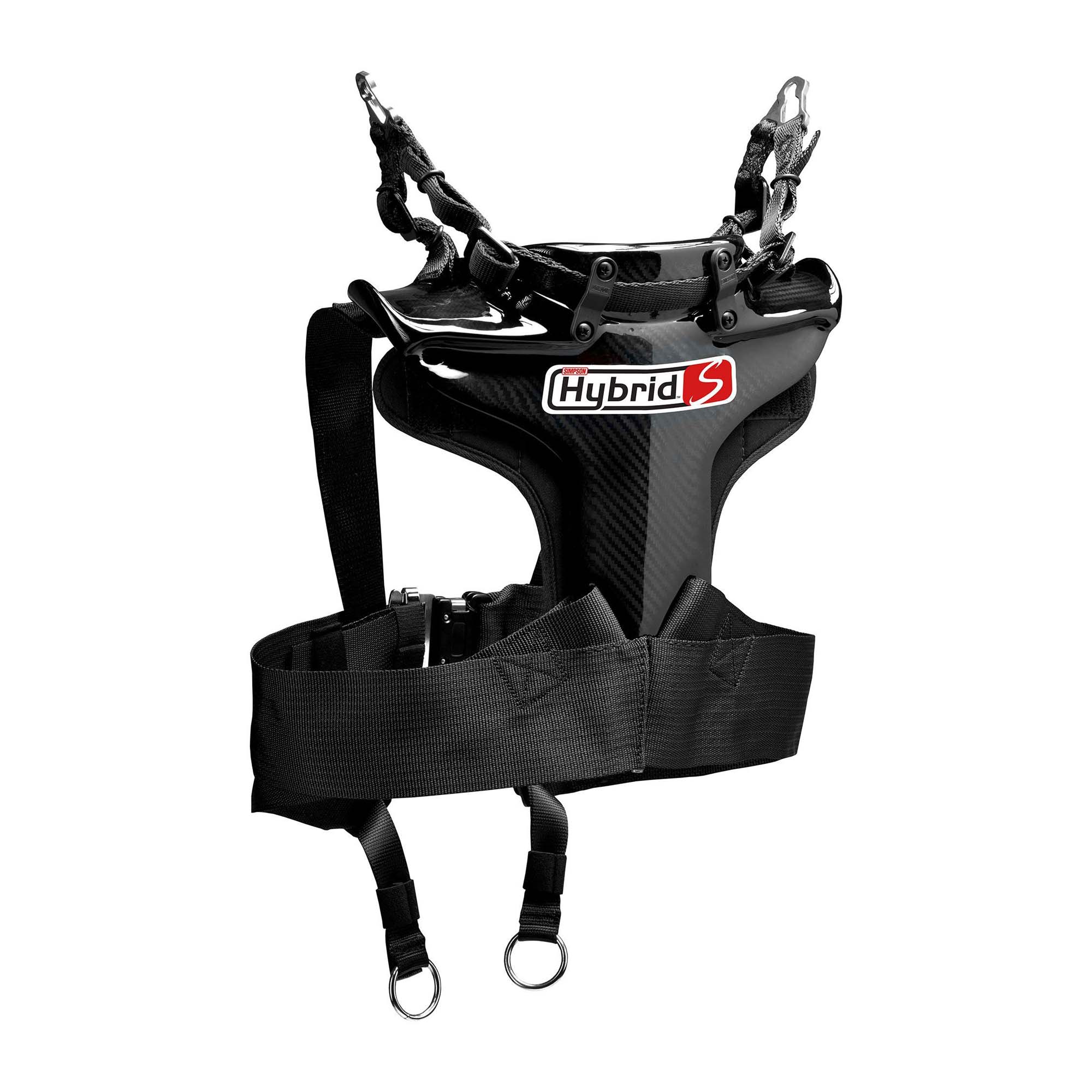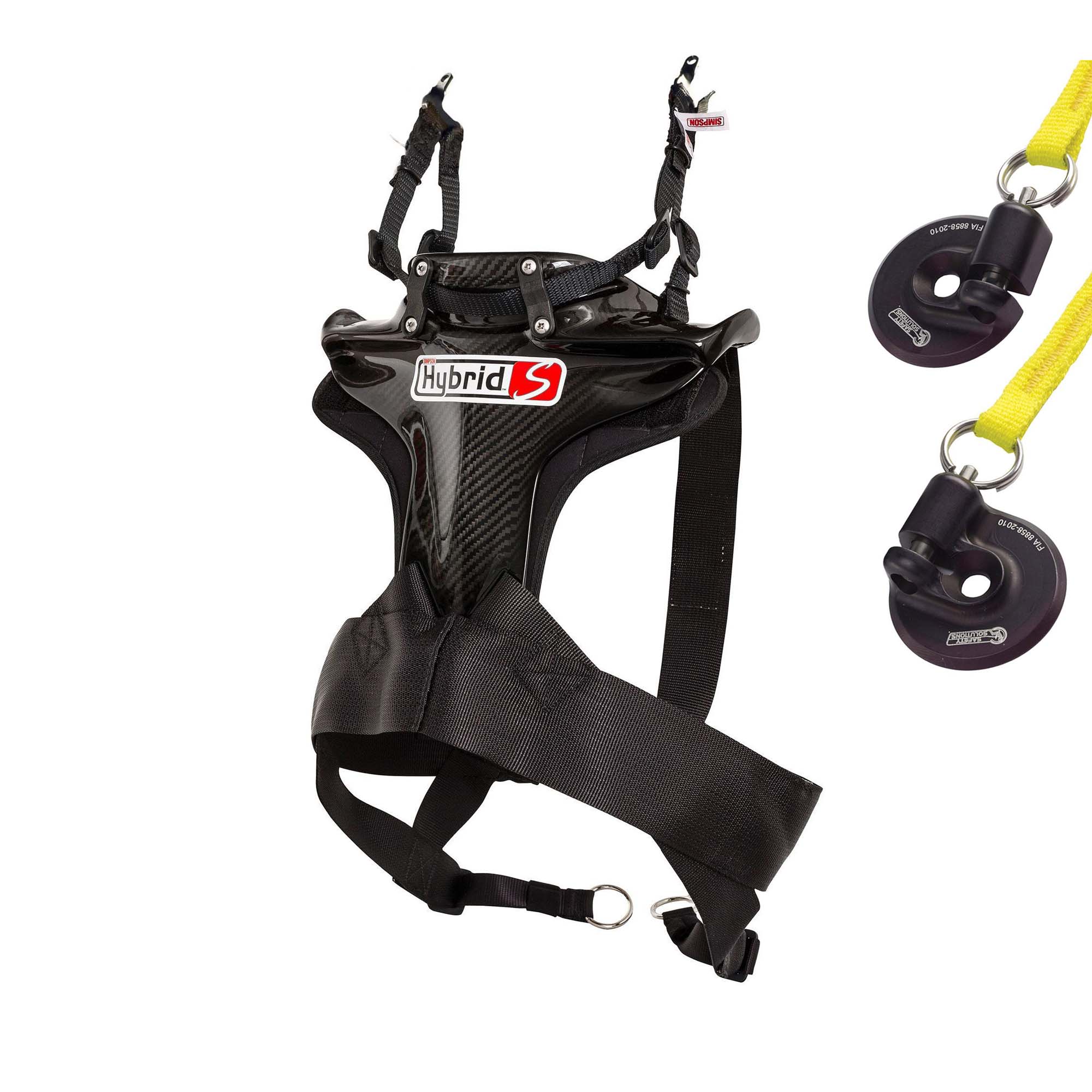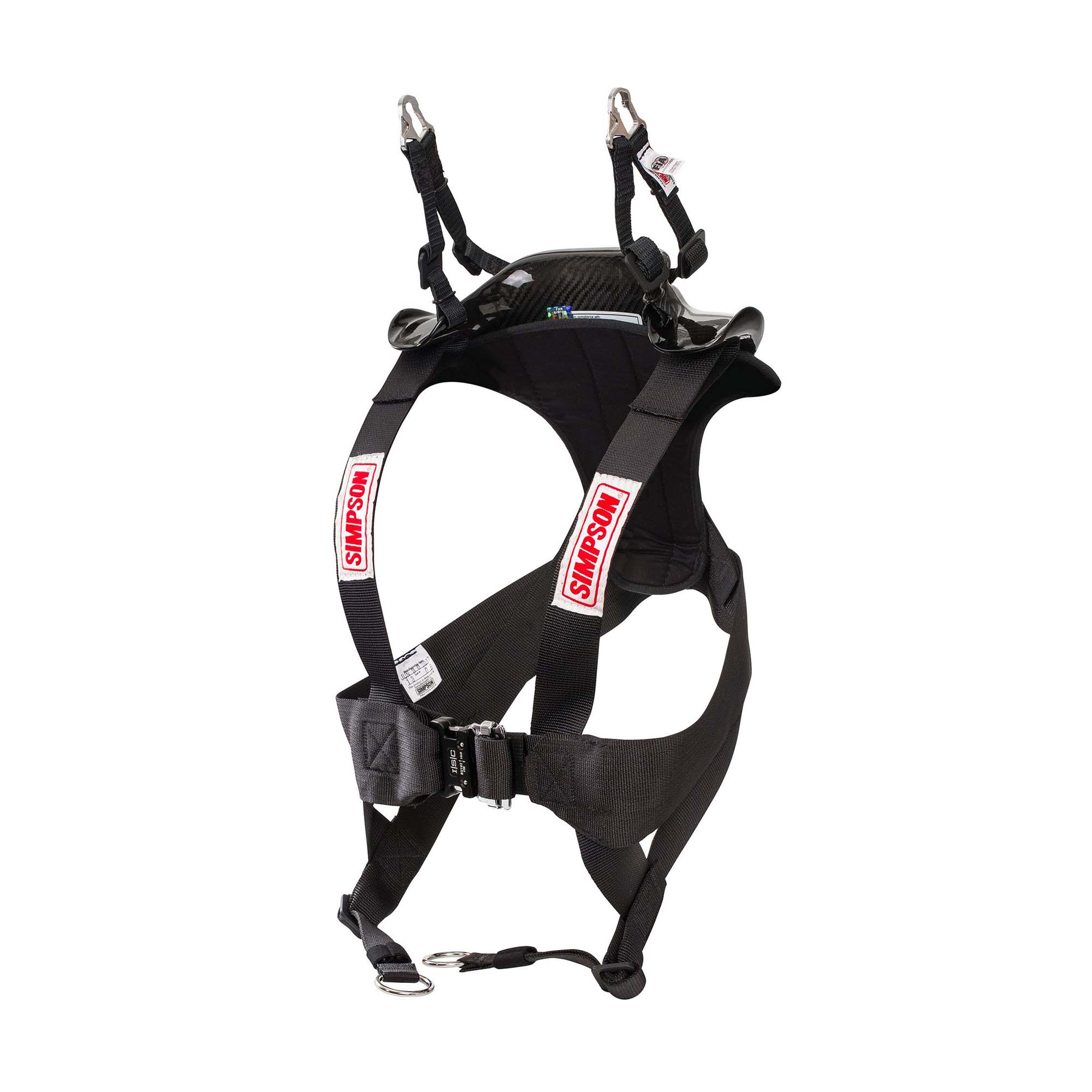


Simpson Hybrid S Head And Neck Restraint
| Rating: | FIA 8858, SFI 38.1 |
| Part Number: | SIHFIA SIZE |
| Manufacturer: | HY |
- High quality carbon fiber construction
- Low profile. No high back to hook on the bars on exit
- Multiple load paths to dissipate head loads
- Buckle attachment in front. No bulky straps underneath
Anchor Options:
- M61 Anchors (pictured): Quick-release style anchor that attaches directly to the helmet. Additional $65.00.
- Post Anchors: Uses the same Post-Anchors popularized by Hans Devices (not included). Easy to use, and allows cross-compatibility with Hans-Equipped helmets. Requires purchase of Hans Anchors
Simpson's Hybrid S is the ONLY Head and Neck Restraint System tested and approved by Simpson for use with 3-point belts. Other systems that share the "Hybrid" name have not been tested and are NOT recommended for use with 3-point belts.
Note: For maximum protection, Simpson and OG-Racing both highly recommend a complete cockpit safety system whenever driving on track that includes, but is not limited to, a full roll-cage, full-containment seat, Snell or FIA rated helmets, FIA or SFI-rated Head and Neck Restraint, and a 6+ point harness system.
3-Point Belt Fitment Notes: The Hybrid S includes SAS (Seat Belt Anchoring System) Tethers. These are designed to attach to the buckle mechanism of 5/6/7 point harnesses and are not needed when used with 3-Point belts.
- Sitting in your seat, connect the 3-Point belt and sit in your normal driving position. The device should be in a comfortable position behind the driver's back, and resting against the back seat cushion. If the device is uncomfortable, a pad is available separately that will attach to the back of the seat and provide a slot for the device to rest. This is generally not needed when used in a soft back seat, as found in most street/passenger cars.
- Adjust the Helmet Tethers: Have a helper apply gentle pressure to the shoulder pads at the top of the device. While the wearer is looking straight forward, hold the triangulated tether up to the side of the wearer’s helmet. Adjust the side tethers so that the tether end fitting can be easily inserted into the helmet anchor without having it apply downward pressure to the helmet. A comfortable adjustment on the side tether is to have about an additional ¼” of slack in the tethers at this point.
- With your helper maintaining pressure on the device, and the wearer looking straight forward, adjust the rear tethers so that there is between ½” to 1” of slack in the rear tether. Test the amount of head movement by moving the head forward. The wearer should have between ½” to 2” of forward head movement before the slack is taken out of the tether system. This should be plenty of head movement to be able to drive the car for on track activities.
- Your device is now ready for use!
Choose options


